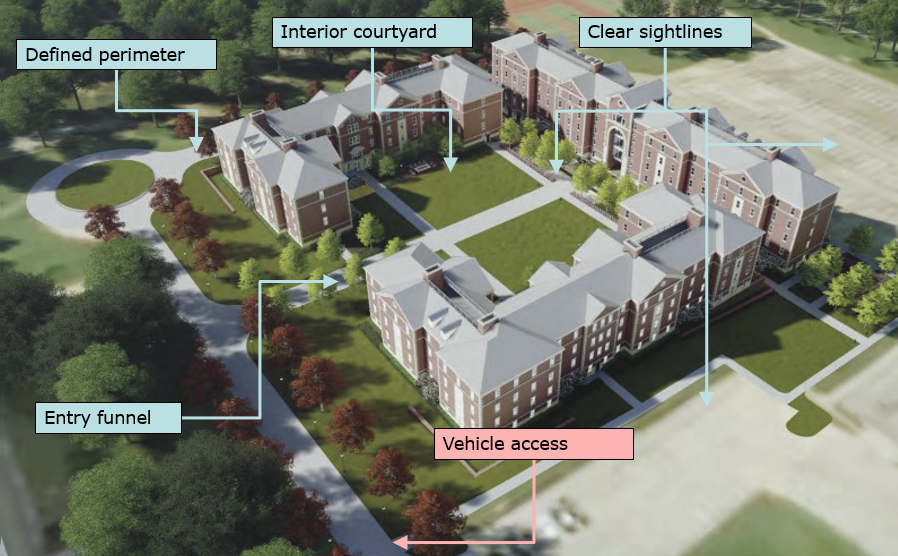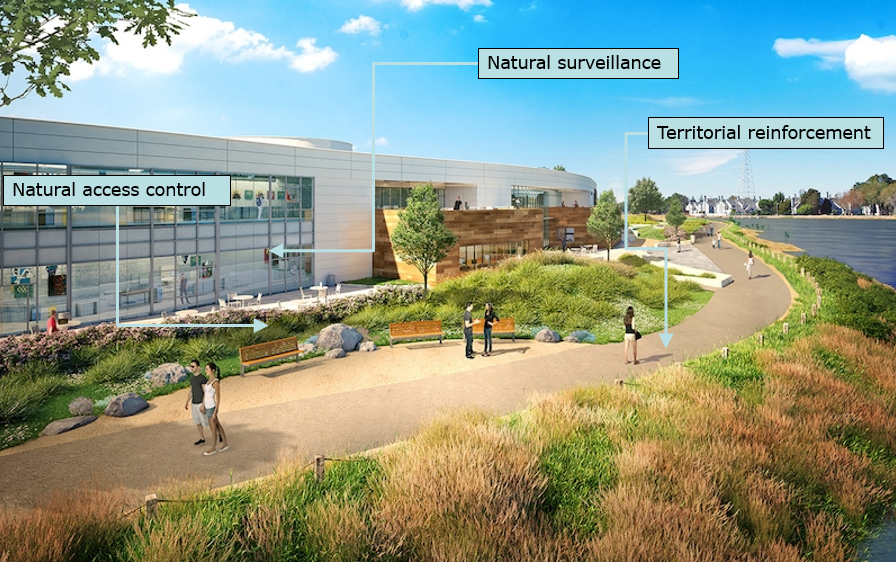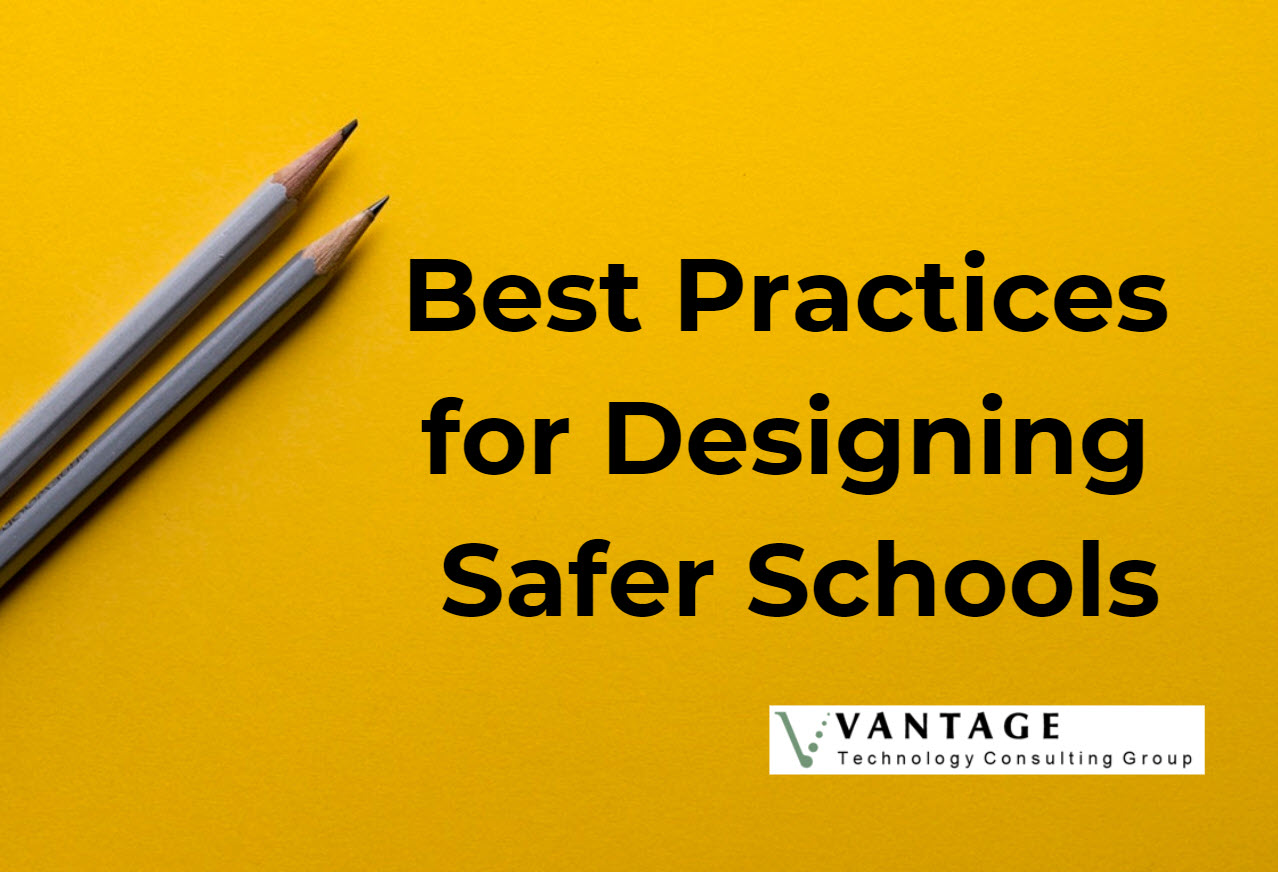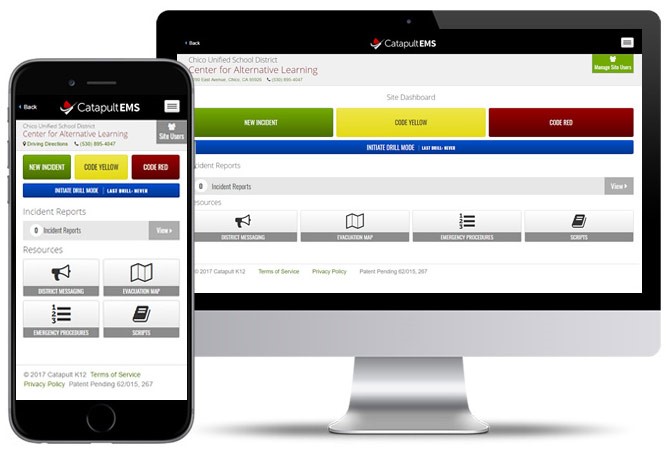Safe schools are a priority in every community across the United States. Vantage is especially interested in the design of safe schools and we have been working with leading architects to promote best practices and incorporate appropriate technology in the design of academic facilities, and with school administrators to conduct risk assessments and create revised security and safety plans, policies, and security practices.
Our 2-part series on designing safer schools covers:
Best Practices for Designing Safer Schools
On one hand, we want to make schools welcoming places for learning and as safe as possible for students. On the other hand, most of us appreciate the aesthetics and beauty of a well-designed building that does not resemble a jail facility.
Without turning our schools into fortresses, what’s the best way to balance school security with design?
At Vantage, we have identified 3 overlapping approaches for designing more secure and safer schools by looking at security through the lens of architecture, operations and technology. A fourth component that is often forgotten but is just as important is community collaboration.
Security through Architecture
Using architecture and architectural details, we can design safer schools by looking at campus and building layout and using environmental design to prevent or deter crime. Early space planning and paying attention to door hardware are also significant safety contributors.
Campus and building layout
The core idea behind the campus and building layout is to design it to increase observation (or the potential for observation) which has been shown to increase security. When people perceive that they are being watched, they tend to behave like they are being watched. Limiting the number of corners and hidden areas will be key. Within the building, grouping areas of similar security access levels in departments or wings with single entrances will also help funnel individuals through a common entry. Since this will not always be possible, one must look at layering other levels of security into the built environment.
Using a layered security approach with increasing layers of protection is a good first step in designing safer schools. The goal is to push detection to the happen at the furthest possible point from the most important areas.
The starting point for layered security is creating a defined perimeter to identify school boundaries and discourage unauthorized people from entering. Defined walkways and entries that funnel all pedestrian traffic. In a K-12 environment, you can typically funnel all traffic into a main lobby where you can add other level of security. A lobby that is intended to be the main entrance should be designed with this function in mind and provide an adequate and clearly demarked waiting area. It should not be easy to enter the rest of the campus without being seen and provided authorization.
Other areas of concern for school design include:
- Utility connections and shutoffs – The connections should be covered or in secure locations to minimize the potential for mischief or vandalism. You do not want to make it easy for someone to shut off the power or water to a building as a distraction to a more serious threat.
- Vehicle access and parking – You do not want cars to be able to drive on campus and you want to make sure that parking lots or structures are designed with security measures in place. Cars should only be able to access parking areas and the flow of traffic should be designed that there is minimal interaction with pedestrians during pick-up and drop off times, ensuring pedestrians are safe during times of heightened traffic.
- Sports fields – Sports fields are sometimes an afterthought and becomes a security weakness. It’s important to pay attention on how access takes place between the campus and the field.
- Pick-up and drop-off locations – This is particularly important for K-12, but it is also important to limit areas where vehicular traffic can enter a college or university campus.
- Multiple entry points – On college and university campuses, there are generally multiple pathways and entryways into buildings that may require extra thought or need to be coupled with other design elements. One way to approach these situations is to think of the design as multiple smaller campuses when applying security measures. You secure the areas in segments, identifying the main entries to each location and layering security from there.

Example of layered security from Texas Women’s University. The red call out is an area of concern where it seems a vehicle from the parking lot may be able to drive onto the sidewalk and drive into the courtyard. Bollards, landscaping, or even an art installation can be used as a barrier or deterrence factor.
Crime Prevention though Environmental Design (CPTED)
Using the following environmental design concepts contributes to security prior to using any technology equipment:
- Natural surveillance – Maximizing visibility of people, parking areas, pathways and entrances using doors and windows that look out onto these areas and incorporating see-through barriers and pedestrian-friendly sidewalks. Proper lighting also contributes to natural surveillance by using feature lighting that focuses on access control points or potential hiding places.
- Natural access control – Selectively placing entrances and exits, fencing, lighting and landscape to limit or control access. This has proved to reduce the opportunity for crimes by either physically or psychologically keeping individuals from unwanted areas.
- Territorial reinforcement – Using the environment to clearly define public, semi-public and private spaces and keeping up with the maintenance of the area will increase a sense of ownership and an environment where the users will also look out for the space and one another. Think of the broken window theory in which a visible sign of crime or civil disorder, when left ignored, can cause further crimes. When an environment is designed in this way, it makes it easier for strangers to stand out and fosters a “see something, say something” sense of community.

Examples of Territorial Reinforcement at Oracle’s Design High School. This site contains a public walkway which was strategically incorporated into the overall security program of the school without sacrificing pleasing aesthetics.
Early space planning
The idea behind early space planning is to build security into the design instead of onto the design. This requires holistic design thinking that starts with the master plan and continues through to the interior design. Space planning with security in mind will lead to the need for less technology, which in turn means a smaller dollar investment is required for the security systems. Buildings could be shaped, placed, oriented in manners that create less need for cameras or card readers layered on top of them. Obtaining full engagement of the Architects, owners and end users is critical to this approach.
Proper Door hardware
The most important consideration is to have doors that are lockable from the inside without having to leave the room to lock the door. Many of the classroom locks currently deployed do not have this feature. Another important consideration is that locks should give clear feedback as to whether the door is locked or unlocked. During our security assessments, a common input from teachers is that even though their doors lock from the insider, they still have to reach outside to test the door to confirm it has been locked. The goal is to not have to go into the hallway, potentially in harm’s way, to complete your classroom lockdown. From a new construction standpoint, you should consider planning for card readers in the future, even if it won’t be installed initially, and choose door hardware that can be easily be converted to be electrified and integrate with card readers.
In California and many other states, it is now required to be able to lock a classroom from the inside. A classroom security lockset can perform this function, but in schools with older locks that cannot do this, barricade devices have been deployed as a stopgap measure for existing construction. We caution our clients to be careful when using these devices as they could lead to fire code or ADA violations.
Security through Operations
The design team and our school clients need to understand that any security design elements must be balanced with proper staffing, resources and policies. Some of these important operational elements include lockdown, visitor management, mass notification and maintenance policies and procedures.
Lockdown procedures
The documentation of lockdown procedures and the development of safety checklists are essential to effective school security. Lockdown procedures are unique and need to be adapted to each specific campus. Special attention needs to be applied to the administrative lobby which is the most vulnerable location on most K-12 campuses and to ensuring that there are observations points throughout the campus. Other unique and important areas are open fields and cafeterias. Your lockdown procedure should account for a plan of action for every location on your campus.
There are 4 keys to useful lockdown procedures:
- Conduct lockdown drills periodically throughout the school year and validate and revise the safety protocols as needed
- Vary the drill scenarios to test responses of administrators and students on a regular basis
- Make sure there are built-in procedures to ensure that there is no single point of failure
- Include local police and other first responders in some of your drills so that they get to know your campus, provide their input, and you get to learn what their needs are as well
Visitor management
Policies around visitor management are another critical component of a safe school. There are two questions that need to be addressed for every visitor who enters a campus – are you who you say you are and are you supposed to be here. Having sign-in sheets lets you keep track of who is visiting your school and providing badges to visitors let others on the campus know that the visitor has been vetted. Badges are a good way to provide visual verification of an authorized visitor.
Mass notification
Having an operationally-focused mass notification system is essential when it is necessary to get communications out. The ability to send a message from multiple devices is important for administrators who are in the middle of a situation. A system that broadcasts to voice, text, email, website and other channels will ensure that the message is received by all audiences.
Remember that the earliest possible detection enables the soonest possible communication.
Maintenance
Maintaining well-kept grounds and facilities will go a long way toward improving school safety. The maintenance and administration team should regularly check that gates and fencing is not broken, lightbulbs are replaced, trash is picked up, landscaping is trimmed, and cameras and other security devices are operational.
Security through Technology
The last layer of defense in safer schools should be the application of technology.
Mass Notification
The highest value technology is a mass communication system. These systems provide situational awareness about where and when incidents are happening. Having a system that lets administrators send out notifications as soon as possible to teachers, students and first responders buys time for everyone to implement their procedures and provides situational awareness to police and fire departments when they arrive on campus. Messages can also be sent to parents to inform them of their roles during an event or remind them of your school’s reunification process. You don’t want hundreds of concerned parents storming the front door all at once.
Duress and panic buttons
Installing duress or panic buttons in the main lobby or other critical locations can provide early warning and trigger the mass notification system. On college campuses where building access is more distributed, the use of blue light emergency phones can play a similar role as panic buttons. The key here is to not create a single point of communication that when compromised becomes a single point of failure.
Visitor management
A visitor management system helps identify who a person is and whether they should be on the campus. It is important to remember that the solution is only as strong as the procedures in place. The higher end systems can easily set flags for visitors who should be denied access and provide reports of who and when visitors were on campus. These systems can cross reference databases, internal blacklists, custodial parent lists, etc. to provide you with quick information during check-in.
Video surveillance
Video surveillance is often used for forensic or after the fact investigations. The presence of cameras also does provide a level of deterrence as people can see that they are being monitored. During an actual incident, properly designed video surveillance systems can provide situational awareness, but they should not be considered as the only part of your overall security program.
We are starting to see video analytics solutions being introduced for school safety as well. These solutions include features that serve as digital fences, can identify objects left behind and provide facial or license plate recognition. These solutions have matured and are often available as “out of the box” features on middle to high end cameras.
Access controls
Another way technology can assist with school safety is by converting to an electronic means of controlling access. Utilizing card readers not only gives you new flexibilities and opportunities of integrating other systems as well, but it also replaces “brass key management” which is often a laborious task for school districts. Access control systems use electronic cards or fobs to grant access to a campus or specific rooms. While reducing the effort it takes to know who has keys to what facility, an access management solution provides an audit trail of what doors were opened or closed, by whom and when.
It is important to coordinate the access system with the door hardware. Even if access control is not in the initial budget for new school construction, putting in the wiring can save money upfront instead of retrofitting a solution after a project is complete.
Community Collaboration
The last important component for safer schools is community involvement. The opportunities for success through collaboration are on multiple levels. Informing parents of the resources at their disposal for mental health, counseling, and anti-bullying programs go a long way. Having a “parents-night” to train them on proper situational awareness and on their role in different security and safety drills has proven to be beneficial to many schools.
Additionally, schools also need to collaborate with local first responders from the police and fire departments on joint programs and initiatives. This allows them to familiarize themselves with your campus and for everyone to understand what roles and responsibilities they assume during a response to an incident. Local police departments can educate schools on best practices and some have even partnered to allow access to their camera views from their dispatch centers and patrol vehicles. This type of collaboration multiplies your preparedness for an event.
It is important to realize that in order to create a safer school environment, we must look at the many different factors influencing a school’s overall security posture. Though active shooter incidents have been on the rise in the US, we must not forget that these incidents are still statistically much less likely to occur as opposed to bullying, fire hazards, and other safety and security events that we should not dismiss. We owe it to our communities to take a holistic and collaborative approach as administrators, architects, parents, and security consultants to ensure the safety of our students.
This post is based on a presentation by Associate Mike Niola. Mike will also be part of a roundtable panel discussion on Safer School sponsored by AIA|Los Angeles on March 5th. In addition, Mike will also be speaking at the California Association of School Business Officials (CASBO) in San Diego in April and will be participating in a Designing Safer Schools workshop at the AIA National Convention in Las Vegas in June.


